Germany
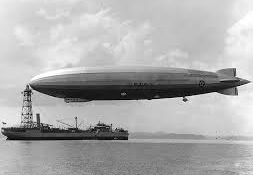 Most people know what a blimp is. It is an airship, but not the first airship. Most people have also heard of the Hindenburg…a airship than exploded causing an horrific crash. While one airship is loved by all who see it, and one met a horrible end, yet another airship brought fear to many. The third airship…a Zeppelin, which is a type of rigid airship named after the German Count Ferdinand von Zeppelin who pioneered rigid airship development at the beginning of the 20th century, was used at one time as a bomber.
Most people know what a blimp is. It is an airship, but not the first airship. Most people have also heard of the Hindenburg…a airship than exploded causing an horrific crash. While one airship is loved by all who see it, and one met a horrible end, yet another airship brought fear to many. The third airship…a Zeppelin, which is a type of rigid airship named after the German Count Ferdinand von Zeppelin who pioneered rigid airship development at the beginning of the 20th century, was used at one time as a bomber.
Zeppelin’s notions were first formulated in 1874 and developed in detail in 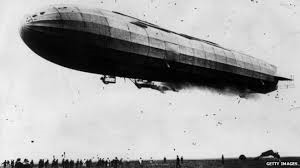 1893. When they were built, they were patented in Germany in 1895 and in the United States in 1899, as commercial passenger airships. The airship design was an outstanding success, and the word zeppelin is often used to refer to all rigid airships. Zeppelins were first flown commercially in 1910 by Deutsche Luftschiffahrts-AG (DELAG), the world’s first airline in revenue service. By mid-1914, DELAG had carried over 10,000 fare-paying passengers on over 1,500 flights. Those were the good years of its use.
1893. When they were built, they were patented in Germany in 1895 and in the United States in 1899, as commercial passenger airships. The airship design was an outstanding success, and the word zeppelin is often used to refer to all rigid airships. Zeppelins were first flown commercially in 1910 by Deutsche Luftschiffahrts-AG (DELAG), the world’s first airline in revenue service. By mid-1914, DELAG had carried over 10,000 fare-paying passengers on over 1,500 flights. Those were the good years of its use.
During World War I, the German military found a new use for the Zeppelins. They were used as bombers and scouts. The new Zeppelins brought terror to the people. During their use, the Zeppelins were used to kill over 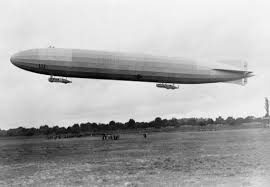 500 people in bombing raids in Britain. The new type of bomber didn’t, however, bring victory to Germany in World War I. When you think about it, how could an airship, like the Zeppelin make a good fighting aircraft. Its very design was far too vulnerable to any kind of bullet. I suppose that it was thought that there wouldn’t be many other “bombers” in the sky, but that doesn’t make the Zeppelin a safe bomber in any way. Nevertheless…safe, effective, accurate, or not…the Zeppelin worked as a bomber for a time. Unusual as it was, the slow-moving…about 84 miles per hour…airship had the distinct honor of being a bomber in World War I.
500 people in bombing raids in Britain. The new type of bomber didn’t, however, bring victory to Germany in World War I. When you think about it, how could an airship, like the Zeppelin make a good fighting aircraft. Its very design was far too vulnerable to any kind of bullet. I suppose that it was thought that there wouldn’t be many other “bombers” in the sky, but that doesn’t make the Zeppelin a safe bomber in any way. Nevertheless…safe, effective, accurate, or not…the Zeppelin worked as a bomber for a time. Unusual as it was, the slow-moving…about 84 miles per hour…airship had the distinct honor of being a bomber in World War I.
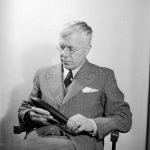
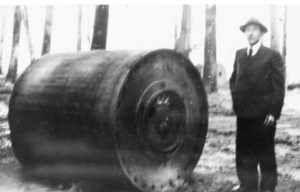 We have all tried our hand at skipping stones across the water, but who would have thought that such an idea could be applied to a bomb, or that it would ultimately become extremely successful in accomplishing its given task…destroying German dams and hydroelectric plants along the Ruhr valley.
We have all tried our hand at skipping stones across the water, but who would have thought that such an idea could be applied to a bomb, or that it would ultimately become extremely successful in accomplishing its given task…destroying German dams and hydroelectric plants along the Ruhr valley.
During World War II, the Allies we’re desperate to cut off energy to the Nazi war machine, so the Allied engineers were given the task of finding a way to breach the defenses surrounding the dams and hydroelectric plants. In the end, it was British engineer, Barnes Wallis who came through with what he called “bouncing bombs.” To watch it in action, one is reminded of skipping stones like most of us have done in the past. In similar fashion, the bomb skips along the water bouncing over the torpedo nets to hit its target.
When World War II began, Germany had the undisputed upper hand when it came to water-based warfare with 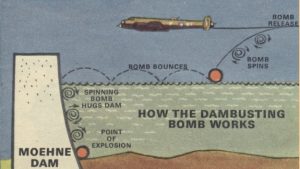
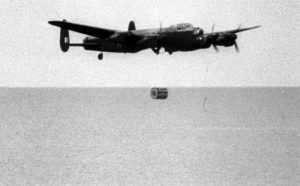 their deadly U-boats and defensive “torpedo nets” placed strategically in front of their energy-creating dams. This made it next to impossible to hit the dams with the traditional torpedo. The British Royal Air Force was determined to take out these German battlements, as they slowly wore the Axis of Evil down.
their deadly U-boats and defensive “torpedo nets” placed strategically in front of their energy-creating dams. This made it next to impossible to hit the dams with the traditional torpedo. The British Royal Air Force was determined to take out these German battlements, as they slowly wore the Axis of Evil down.
The problem was, how to somehow get past the torpedo nets, to destroy the dams and their hydroelectric plants. Wallis had to figure out how to bypass the torpedo nets, in order to make direct contact with the wall of the dams. It seemed like an insurmountable task. After dwelling on the problem for a while, Wallis seized on 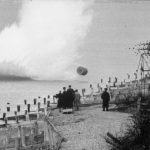
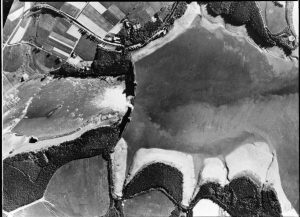 the potential of the Magnus effect, which would bounce a bomb across the water like a skipping stone.
the potential of the Magnus effect, which would bounce a bomb across the water like a skipping stone.
The theory was to create backspin, which would counter the gravity and send the bomb skimming over the water. Once it bounced over the torpedo net, it hit the designated target. The plan seemed plausible, and the Royal Air Force commenced Operation Chastise on May 16, 1943. The results were spectacular!! As it turned out, Barnes Wallis really knew his stuff.
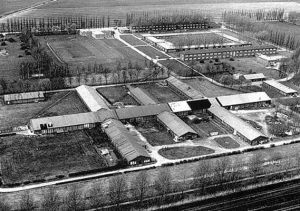 The Neuengamme concentration camp was established in December 1938, and used by the Nazis as a forced labor camp from December 13, 1938 to May 4, 1945, when it was liberated by British troops. At the time of its liberation, about half of the approximately 106,000 Jews held there over time had died. Neuengamme was located on the Elbe river, near Hamburg, Germany. One hundred inmates who were transferred from Sachsenhausen concentration camp, were forced to build the Neuengamme concentration camp. It was established around an empty brickworks in Hamburg-Neuengamme. The bricks produced there were to be used for the “Fuehrer buildings” part of the National Socialists’ redevelopment plans for the river Elbe in Hamburg.
The Neuengamme concentration camp was established in December 1938, and used by the Nazis as a forced labor camp from December 13, 1938 to May 4, 1945, when it was liberated by British troops. At the time of its liberation, about half of the approximately 106,000 Jews held there over time had died. Neuengamme was located on the Elbe river, near Hamburg, Germany. One hundred inmates who were transferred from Sachsenhausen concentration camp, were forced to build the Neuengamme concentration camp. It was established around an empty brickworks in Hamburg-Neuengamme. The bricks produced there were to be used for the “Fuehrer buildings” part of the National Socialists’ redevelopment plans for the river Elbe in Hamburg.
The prisoners worked on the construction of the camp and brickmaking. The bricks were used for regulating the flow of the Dove-Elbe river and the building of a branch canal. The prisoners were also 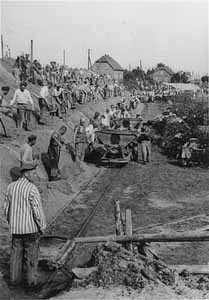 used to mine the clay used to make the bricks. That reminds me of the Jews in Egypt who were forced to build the pyramids. In 1940, the population of the camp was 2,000 prisoners, with a proportion of 80% German inmates among them. Between 1940 and 1945, more than 95,000 prisoners were incarcerated in Neuengamme. On April 10th, 1945, the number of prisoners in the camp itself was 13,500. Over the years that Neuengamme was open, it is estimated that 103,000 to 106,000 people were held there. We may never really know, because they didn’t keep clear records of all the people who went through the camps.
used to mine the clay used to make the bricks. That reminds me of the Jews in Egypt who were forced to build the pyramids. In 1940, the population of the camp was 2,000 prisoners, with a proportion of 80% German inmates among them. Between 1940 and 1945, more than 95,000 prisoners were incarcerated in Neuengamme. On April 10th, 1945, the number of prisoners in the camp itself was 13,500. Over the years that Neuengamme was open, it is estimated that 103,000 to 106,000 people were held there. We may never really know, because they didn’t keep clear records of all the people who went through the camps.
From 1942 on, the inmates were forced to work in the Nazi armament production. At first, the work was performed in the Neuengamme workshops, but soon it was decided to transfer the prisoners to the armaments factories in the surroundings areas. At the end of the war, the prisoners of Neuengamme were spread all over northern Germany. As the Allied troops advanced, hundreds of inmates were forced to dig antitank ditches. In many large north German cities, The prisoners were also require to clear rubble and removed corpses after bombing raids. There were 96 sub-camps, 20 of them for women. In early spring 1945, more than 45,000 inmates were working for the Nazi industry. A third of the women were forced to be among a part of the Nazi 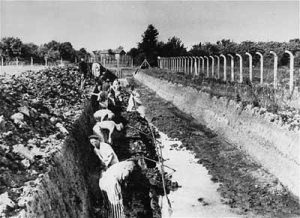 industry workforce. By this time, the internal population of Neuengamme was 13,500, which made it completely overcrowded. The estimated number of victims in Neuengamme is approximately 56,000. Thousands of inmates were hanged, shot, gassed, killed by lethal injection or transferred to the death camps Auschwitz and Majdanek. As the war neared its end, the SS decided to evacuate Neuengamme. They had hoped to avoid having them liberated…probably hoping to regroup further north. This was the start of one of the worst death marches of the war. During these death marches, approximately 10,000 inmates perished by shootings or simply starvation. Nevertheless, the Allies won this war, and then they went in and liberated the prisoners of the many death camp.
industry workforce. By this time, the internal population of Neuengamme was 13,500, which made it completely overcrowded. The estimated number of victims in Neuengamme is approximately 56,000. Thousands of inmates were hanged, shot, gassed, killed by lethal injection or transferred to the death camps Auschwitz and Majdanek. As the war neared its end, the SS decided to evacuate Neuengamme. They had hoped to avoid having them liberated…probably hoping to regroup further north. This was the start of one of the worst death marches of the war. During these death marches, approximately 10,000 inmates perished by shootings or simply starvation. Nevertheless, the Allies won this war, and then they went in and liberated the prisoners of the many death camp.
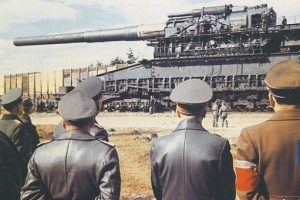 In 1934, Hitler had one problem…the French Maginot Line was the one thing standing in the way of Hitler invading France. In reality, it was the only thing that stood between Hitler and all of Western Europe. The French Maginot Line was a fortification running from the Rhine River to La Ferté consisting of concrete blockhouses, bunkers, and rail lines. The line was elaborate and extensive, and as rumors of its strength made their way to Germany, Hitler began to believe he’d need a miracle for his troops to break through it. Hitler believed that he needed the biggest gun in history.
In 1934, Hitler had one problem…the French Maginot Line was the one thing standing in the way of Hitler invading France. In reality, it was the only thing that stood between Hitler and all of Western Europe. The French Maginot Line was a fortification running from the Rhine River to La Ferté consisting of concrete blockhouses, bunkers, and rail lines. The line was elaborate and extensive, and as rumors of its strength made their way to Germany, Hitler began to believe he’d need a miracle for his troops to break through it. Hitler believed that he needed the biggest gun in history.
Engineers from Krupp, a steel company from Essen, were commissioned by the German High Command (OKH) to design a weapon powerful enough to break through the concrete fortifications that were nearing completion. The shells alone had to be strong enough to penetrate 22 feet of reinforced concrete and at least three feet of steel plating, meaning the weapon had to be massive. It had to be to hold and shoot shells large enough to bring such massive destruction. In order to meet the requirements that Hitler had set forth, Krupp engineer Erich Müller calculated that the weapon would have to be far bigger, and much more powerful than any weapon in existence. After much calculation, Müller put together the measurements for his goliath gun and presented the plan to the OKH.
Though Hitler made no formal commitment, the high command knew the design, known as the Schwerer Gustav, was their answer. With a caliber of 31 inches, able to fire a projectile that weighed more than 10 tons 30 miles away, the Schwerer Gustave was incredibly imposing. The barrel was over 100 feet long, longer than any gun barrel in existence, and the body of the gun was bigger than any tank to see battle so far. It was more like a small building than a gun. From the ground up it was almost four stories tall. It was over 150 feet long including the barrel, and weighed over 1,300 tons. To compare it to things of today, the Space Shuttle weighs 2,000 tons. This was no tiny tank. The shells alone, which had been designed with pure destruction in mind, were taller than two men, twice as wide as one, and weighed 20,000 pounds each. It took several men just to load one into the barrel. For the gun to move around, the body was built on two parallel sets of rail wheels, allowing it to travel across special tracks.
Ultimately, two of these weapons were ordered by the high command, the Schwerer Gustav and a smaller model they called “Dora.” However, the models weren’t ready by the time Hitler was, and the Germans were forced to invade France without them. Of course, they shouldn’t have been worried, as their troops far 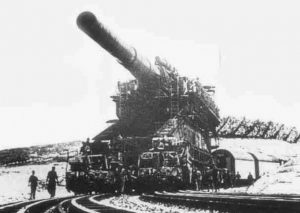 outnumbered the French’s static defenses. Even after the French quickly surrendered, Hitler still wanted to make use of his magnificent and destructive weapon. The siege of Sevastopol was the perfect opportunity. After five weeks of positioning the device, requiring 4,000 men, the weapon was ready. In five days, spanning between June 5 and June 17, the Schwerer Gustav fired 48 rounds, equaling 30,000 tons of ammunition. The barrel of the gun, which had already fired 250 rounds during testing, was worn out entirely. It took 500 men just to fire the gun, and after loading the oversized shells into the machine, they were exhausted. While the gun was daunting to anyone who saw it in action, it really wasn’t very practical.
outnumbered the French’s static defenses. Even after the French quickly surrendered, Hitler still wanted to make use of his magnificent and destructive weapon. The siege of Sevastopol was the perfect opportunity. After five weeks of positioning the device, requiring 4,000 men, the weapon was ready. In five days, spanning between June 5 and June 17, the Schwerer Gustav fired 48 rounds, equaling 30,000 tons of ammunition. The barrel of the gun, which had already fired 250 rounds during testing, was worn out entirely. It took 500 men just to fire the gun, and after loading the oversized shells into the machine, they were exhausted. While the gun was daunting to anyone who saw it in action, it really wasn’t very practical.
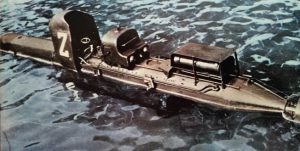 One of the weapons of naval warfare that all of us know about is the torpedo. Beginning in the 1870’s, torpedoes were rapidly introduced into the navies of many states and soon became the primary weapon of destroyers, submarines, and torpedo boats, cruisers, and ships of the line of that period were also armed with torpedoes. Torpedoes were first used by Russian vessels in the Russo-Turkish War of 1877–78. So torpedoes weren’t new on March 26, 1941, when Italy attacked the British fleet at Souda Bay, Crete, using these new detachable warheads. These torpedoes were different however, and I can only imagine how the men on the deck of the British cruiser must have felt as they watched the streaking torpedo coming toward them.
One of the weapons of naval warfare that all of us know about is the torpedo. Beginning in the 1870’s, torpedoes were rapidly introduced into the navies of many states and soon became the primary weapon of destroyers, submarines, and torpedo boats, cruisers, and ships of the line of that period were also armed with torpedoes. Torpedoes were first used by Russian vessels in the Russo-Turkish War of 1877–78. So torpedoes weren’t new on March 26, 1941, when Italy attacked the British fleet at Souda Bay, Crete, using these new detachable warheads. These torpedoes were different however, and I can only imagine how the men on the deck of the British cruiser must have felt as they watched the streaking torpedo coming toward them.
The difference between the torpedoes of old, and these new torpedoes, was that these were manned torpedoes. No, there weren’t men on the torpedo known as the Chariot.” Nevertheless it was unique. Primarily used to attack enemy ships still in harbor, the Chariots needed “pilots” to “drive” them to their targets…basically a guided missile system…but in a very primitive form. Sitting astride the torpedo on a vehicle that 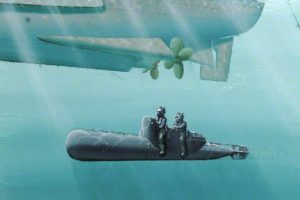 would transport them both, the pilot would guide the missile as close to the target as possible, then ride the vehicle back, usually to a submarine. The Chariot was an enormous advantage, because before its development, the closest weapon to the Chariot was the Japanese Kaiten–a human torpedo, or suicide bomb, which had obvious drawbacks. I can’t imagine being ordered to pilot that one, but then the Japanese were known for their suicide attacks.
would transport them both, the pilot would guide the missile as close to the target as possible, then ride the vehicle back, usually to a submarine. The Chariot was an enormous advantage, because before its development, the closest weapon to the Chariot was the Japanese Kaiten–a human torpedo, or suicide bomb, which had obvious drawbacks. I can’t imagine being ordered to pilot that one, but then the Japanese were known for their suicide attacks.
The Italian attack was just the first successful use of the Chariot, or any other manned torpedo, although they referred to their version as Maiali, or “Pigs.” On that March day, six Italian motorboats, commanded by Italian naval commander Lieutenant Luigi Faggioni, entered Souda Bay in Crete and planted their Maiali along a British convoy in harbor there. The British cruiser, York was so badly damaged that it had to be beached. The manned torpedo system proved to be the most effective weapon in the Italian naval arsenal, and it was used successfully against the British again in December 1941 at Alexandria, Egypt. Italian torpedoes sank the British battleships Queen Elizabeth and Valiant, as well as one tanker. They were also used against merchant ships at  Gibraltar and elsewhere.
Gibraltar and elsewhere.
Deeply angered, the British avenged themselves against the Italians, by sinking the new Italian cruiser Ulpio Traiano in the port of Palermo, Sicily, in early January 1943. An 8,500-ton ocean liner was also damaged in the same attack. After the Italian surrender, the use of the manned torpedo continued to be used by both the British, and later the Germans. In fact, Germany succeeded in sinking two British minesweepers off Normandy Beach in July 1944, using their “Neger” torpedoes. These would be the best torpedo, until the guidance systems could be invented.
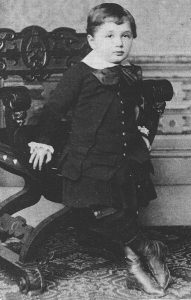
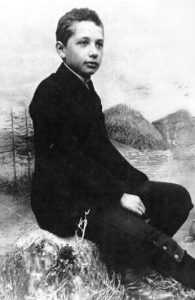 When I think of a genius, my favorite genius always comes to mind…Albert Einstein. He doesn’t have the highest recorded IQ in history, and in fact, is listed as 12th among geniuses. Nevertheless, Genius Day…a day to highlight the greatest minds out there, falls on Albert Einstein’s birthday, so maybe he is a favorite of a lot of people. It makes sense, because Albert Einstein is on of the most famous, iconic, influential, and admired people in history. He was incredibly smart, but oddly not snobby about it, like some geniuses, who rub me the wrong way.
When I think of a genius, my favorite genius always comes to mind…Albert Einstein. He doesn’t have the highest recorded IQ in history, and in fact, is listed as 12th among geniuses. Nevertheless, Genius Day…a day to highlight the greatest minds out there, falls on Albert Einstein’s birthday, so maybe he is a favorite of a lot of people. It makes sense, because Albert Einstein is on of the most famous, iconic, influential, and admired people in history. He was incredibly smart, but oddly not snobby about it, like some geniuses, who rub me the wrong way.
I wonder what it must have been like to be a genius in a day when the system didn’t necessarily recognize such things. Einstein started school, as most children did, in a normal Catholic elementary school, in Munich, Germany, and remained there for 3 years. At that point, they realized that they didn’t have the ability to teach such a child. He was transferred to he Luitpold Gymnasium (now known as the Albert Einstein Gymnasium) at age 8, where he received advanced primary and secondary school education until he left the German Empire seven years later. In German, gymnasium means high school. Einstein excelled at math and physics right from the start. He reached a mathematical level years ahead of his peers. At twelve years old, Einstein taught himself algebra and Euclidean geometry in one summer. Einstein also independently discovered his own original proof of the Pythagorean theorem at age 12. Those were years of intense discovery for him…discoveries that most people could never begin to fathom. At age 13, Einstein was introduced to Kant’s Critique of Pure Reason, and Kant became his favorite philosopher, his tutor stating: “At the time he was still a child, only thirteen years old, yet Kant’s works, incomprehensible to ordinary mortals, seemed to be clear to him.” Probably his best known work was the Theory of Relativity, which actually took in two theories by Albert Einstein: special relativity and general relativity. Concepts introduced by the theories of relativity include spacetime as a unified entity of space and time, relativity of simultaneity, kinematic and gravitational time dilation, and length contraction. If you don’t understand all of that, you are in good company.
It is hard to imagine what it must have been like to attempt to teach such a great mind anything. Seriously, 
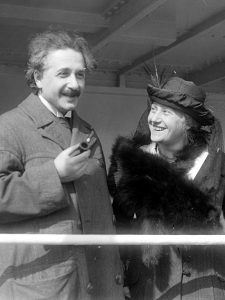 what could an average teacher teach him that he couldn’t learn on his own, and even begin to teach the teacher. I suppose that is the case with any genius, and it must have been a problem for many a teacher, not to mention to the child’s parents. Geniuses are a phenomena that most of us can only imagine, and maybe that is why it is felt that they should have a national day of their own. Often, the day is celebrated by a gathering of confirmed geniuses getting together to “show off” their skills. It is filled with competitions designed to exercise their minds in a group of their peers, which is definitely something they don’t get to do very often. I can’t think of a more fitting day for it to be celebrated than Albert Einstein’s birthday.
what could an average teacher teach him that he couldn’t learn on his own, and even begin to teach the teacher. I suppose that is the case with any genius, and it must have been a problem for many a teacher, not to mention to the child’s parents. Geniuses are a phenomena that most of us can only imagine, and maybe that is why it is felt that they should have a national day of their own. Often, the day is celebrated by a gathering of confirmed geniuses getting together to “show off” their skills. It is filled with competitions designed to exercise their minds in a group of their peers, which is definitely something they don’t get to do very often. I can’t think of a more fitting day for it to be celebrated than Albert Einstein’s birthday.
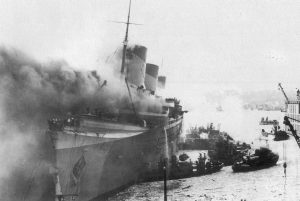 A fire always draws crowds of spectators, and the crowds that gathered at New York City’s pier 88 on February 9, 1942 were no different. The billowing smoke drew their attention, and they were witness to the fire, and in the end, the loss of the SS Normandie…the largest ocean liner in the world at that time. Valiant fire fighting efforts successfully contained the fire after five and a half hours, but the effort was in vain. Five hours after the flames were out the SS Normandie rolled onto its side and settled on the bottom of the Hudson River.
A fire always draws crowds of spectators, and the crowds that gathered at New York City’s pier 88 on February 9, 1942 were no different. The billowing smoke drew their attention, and they were witness to the fire, and in the end, the loss of the SS Normandie…the largest ocean liner in the world at that time. Valiant fire fighting efforts successfully contained the fire after five and a half hours, but the effort was in vain. Five hours after the flames were out the SS Normandie rolled onto its side and settled on the bottom of the Hudson River.
The SS Normandie was intended to be the pride of the French people. The ship was designed to be the height of shipbuilding technology and modern culture. The first class passenger spaces were decorated in the trendiest Art Deco style and filled with all the latest luxuries. The radical new hull design, with a subsurface bulb beneath a clipper bow, and long, sweeping lines gave her previously untouched speeds, while requiring far less fuel. In order to improve the safety for the passengers, the ship even had one of the earliest radar sets ever used by a commercial vessel.
Still, with all of Normandie’s modern touches, there was to be no salvation for the great ship. The Normandie was put into service during the height of the Great Depression. A sign of her future, seemed to predict trouble when, on launching, the wave she kicked up smashed into hundreds of onlookers, though no one was injured in this accident. The ship performed spectacularly during trials, but would never prove to be a particularly successful ship, only making just enough to cover her operating expenses and never paying for the loans needed to finance her construction. The French declaration of war on Germany in September 1939 found the Normandie in New York, tied up alongside of pier 88. In spite of the loss of 28 American lives when a German u-boat torpedoed the Athenia on the first day of hostilities, the United States remained neutral. Nevertheless, authorities immediately put Coast Guard troops on board the Normandie and interned her in accordance with international maritime law. Though the French crew would remain aboard maintaining the vessel, she had to remain beside the pier, guarded by the Coast Guard, for two long years until the United States entered into the war. Five days after the attack on Pearl Harbor, the French crew were removed from Normandie. France was technically a German ally under the Vichy government, and as such the US government exercised the right to 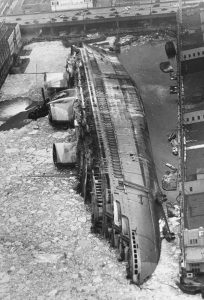 seize the ship as belonging to an enemy nation. The ship was renamed the USS Lafayette, in honor of the French General who had helped make the United States independence possible during the revolution. The US Navy took possession of the vessel and began her conversion as a troop transport.
seize the ship as belonging to an enemy nation. The ship was renamed the USS Lafayette, in honor of the French General who had helped make the United States independence possible during the revolution. The US Navy took possession of the vessel and began her conversion as a troop transport.
The conversion was a rushed job, as the ship was intended to set sail under the US flag on the 14th of February, 1942. However, given the size of the ship, and the complexity of its design, it proved a to be a substantial hindrance to the men performing the conversion. By February 6th, it was clear that the conversion would not be completed on time, and the conversion crew requested that the sail date be pushed back two weeks. The request was denied, and the frazzled crew rushed into a frantic effort to complete the work on time. Tragically, this forced haste set up the conditions for a disaster. Work spaces were not properly cleaned or prepared for lack of time to do it, and unsafe conditions became the norm. At 2:30 PM on February 9th, a welder in the first class lounge was performing work next to life preservers that should have been moved ahead of time. The sparks ignited the life preservers. The ship’s modern firefighting system should have prevented the tragedy, but it had been disabled during the conversion and was unavailable to be brought back online. The New York Fire Department responded within 15 minutes, but were horrified to learn the French fittings on the Normandie/Lafayette were not compatible with their hoses. Less than an hour after the fire broke out, the ship was a raging inferno. To help fight the blaze firefighters employed fire boats on the port side of the ship, while firefighters used dockside hoses to tackle the flames on the starboard side. The fight to put out the fires took over five hours, but ultimately it was a success. The fire was declared out by 8:00 PM that evening.
Unfortunately, they realized that they now had a new problem. The fire boats attacking the port side blaze pumped water at a far greater volume than was used by the dockside hoses on the starboard side. The Normandie/Lafayette was listing heavily to Port, submerging a number of open portholes on that side. The Navy attempted to counterflood to right the list, pumping water into the starboard side so that the ship would settle evenly, but It was too late. At a quarter till three, the Lafayette rolled over on her side and settled into the mud at the bottom of the Hudson River. The fire injured 285, with injuries ranging from smoke inhalation to burns. One Brooklyn native, Frank Trentacosta, died in the tragedy. The Normandie remained on the bottom for a year and a half, before finally being righted and floated in August of 1943. It was determined to be too badly damaged to be salvageable, and was sold and broken up for scrap in 1946.
The loss of the Normandie alongside of New York’s pier 88 signaled the end of an era. While ocean liners would remain the principle means to cross the Atlantic until commercial jet liners became available. Nevertheless, 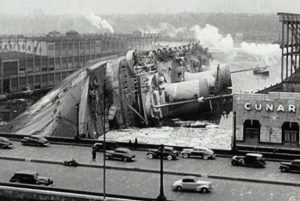
very few ocean liners would be constructed in the post war period. None of these ships would approach either the speed or size of the Normandie. The last dedicated ocean liner to be constructed, the Queen Elizabeth II would hit the water in 1969. Most liners would eventually be removed from service to be converted into cruise liners for tourist jaunts, though a few stubborn holdouts would remain. Today only one ship continues to run the route of the old ocean liners. Constructed as a cruise ship, the Queen Mary II was launched in 2003 as a means by which tourists can attempt to recapture the experiences of the luxurious passages the Normandie had been constructed to provide in days gone by.
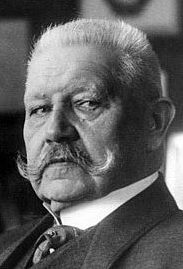
 On January 30, 1933, President Hindenburg appointed Adolf Hitler chancellor of Germany. It wasn’t because of any election, but rather by a constitutionally questionable deal dreamed up by a small group of conservative German politicians who had given up on parliamentary rule. Little did they know that they were party to appointing one of the worst dictators in history. Their attempt to return Germany to conservative authoritarian rule, backfired miserably when, within two years, Hitler and the Nazis outmaneuvered Germany’s conservative politicians to consolidate a radical Nazi dictatorship that was completely subordinate to Hitler’s personal will. I wonder if President Hindenburg wished he had never met Hitler, much less appointed him to be chancellor.
On January 30, 1933, President Hindenburg appointed Adolf Hitler chancellor of Germany. It wasn’t because of any election, but rather by a constitutionally questionable deal dreamed up by a small group of conservative German politicians who had given up on parliamentary rule. Little did they know that they were party to appointing one of the worst dictators in history. Their attempt to return Germany to conservative authoritarian rule, backfired miserably when, within two years, Hitler and the Nazis outmaneuvered Germany’s conservative politicians to consolidate a radical Nazi dictatorship that was completely subordinate to Hitler’s personal will. I wonder if President Hindenburg wished he had never met Hitler, much less appointed him to be chancellor.
Within days of taking power, the Nazis called for Germany to boycott all Jewish businesses. This unexpected anti-Jewish propaganda was the first of many. Hitler hated the Jewish people. He had no reason for his hatred. The Jewish people had done nothing to warrant Hitler’s hatred and rage. One theory is that Hitler had decided that the Jewish people were an inferior race. That is not such a new thought. It had happened before, to the African slaves in history, who had often been referred to as mud people. The Jews, as with the slaves, were treated horribly.
Another reason Hitler hated the Jewish people, was because following Germany’s loss of World War I, Hitler blamed the Jews and the communists living in Germany. He felt that they were part of a huge conspiracy against the German military. He believed that had it not been for their interference, Britain and the allies would have lost the war. Another possible reason for Hitler’s hatred of the Jews was probably jealousy. After World War I, he saw that a lot of Germans were without jobs and struggling. Instead of looking at the war as the root cause of the economic problem, he blamed the Jews for the sorry state of affairs. Because Adolf Hitler was truly insane, I’m sure that his reason to hate the Jewish people made sense to him, but the reality is that his insane mind was the only place that it made sense.
I’m not sure how he managed to get so many people to agree with is ideas, but somehow he did, and when he decided that all Jewish shops were to be boycotted, and stationed his SA Storm Troopers near the shops to 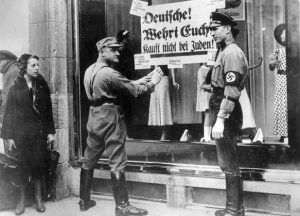
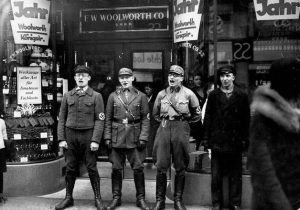
ensure that his plans were carried out, they did as they were told. It wasn’t long after the boycotting of the shops that Hitler took things to the next level, and began hauling the Jewish people to the death camps. As long as he was alive, there was no end to his hatred, and that is definitely not what President Hindenburg or the conservative German politicians had in mind, and I’m sure they wished they had never done it.
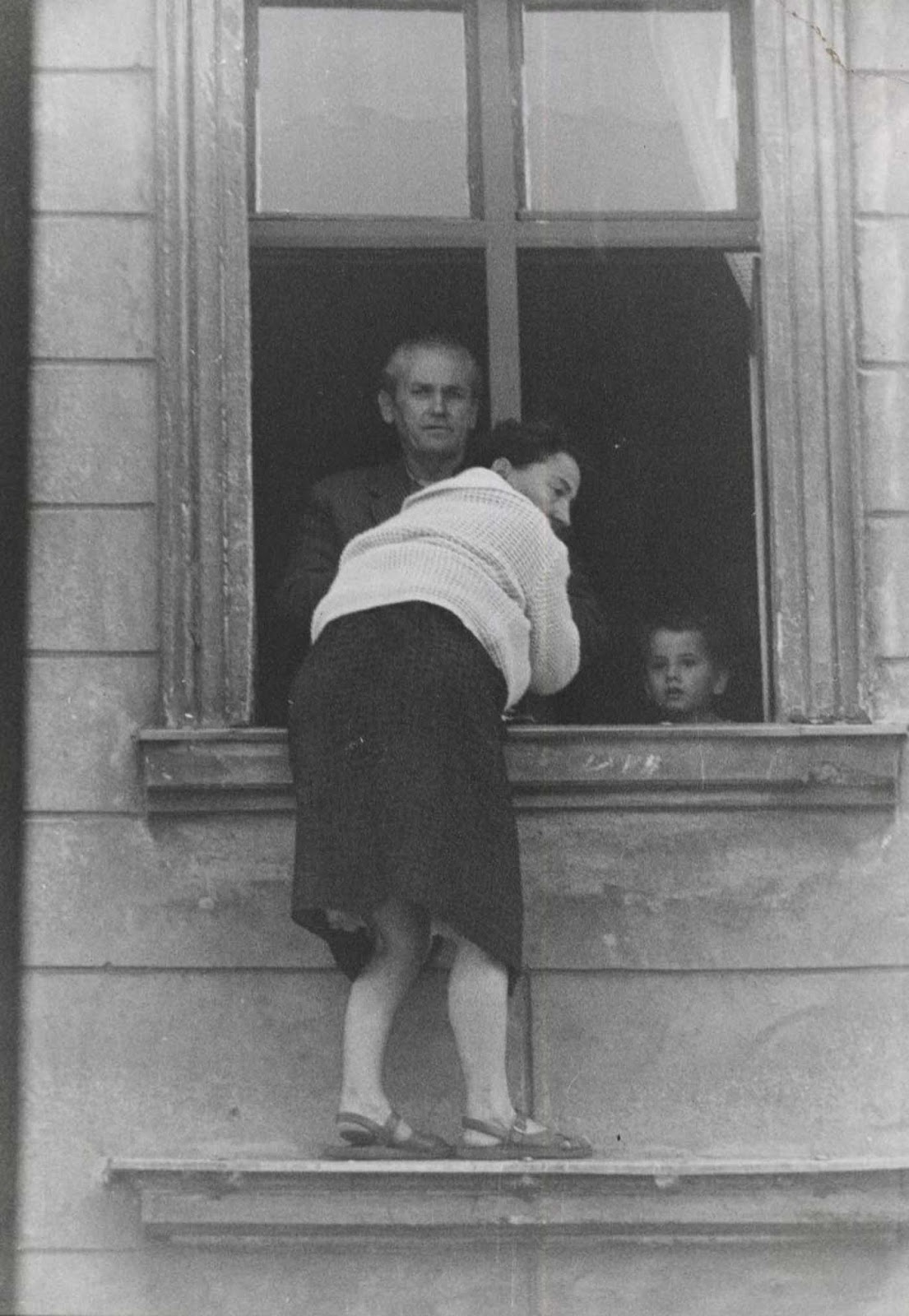 Imagine a world in which you could go to sleep living in freedom, and wake up behind prison walls…and you didn’t leave your home. That is exactly what happened to the people who lived in East Berlin. The Berlin Wall was erected overnight on August 13, 1961. The people of East Berlin were prisoners in their own city. Many of them had friends and family members who lived in West Berlin, but they were no longer allowed to go and see them, nor could the West Berliners come to East Berlin to see the inhabitants of that part of the city. The people in East Berlin were in a panic, and yet nothing could be done to free themselves from their plight. At least, not until they began to get very creative.
Imagine a world in which you could go to sleep living in freedom, and wake up behind prison walls…and you didn’t leave your home. That is exactly what happened to the people who lived in East Berlin. The Berlin Wall was erected overnight on August 13, 1961. The people of East Berlin were prisoners in their own city. Many of them had friends and family members who lived in West Berlin, but they were no longer allowed to go and see them, nor could the West Berliners come to East Berlin to see the inhabitants of that part of the city. The people in East Berlin were in a panic, and yet nothing could be done to free themselves from their plight. At least, not until they began to get very creative.
Many attempts were made in an effort to escape their captors, and many of those failed, but it would be the successful attempts at escape that would stay in our minds all these years. It was the successful attempts that were written about and celebrated in history, because those people won against a tyrannical government. One such escape was captured in pictures. Early in the construction, before most people even knew what was going on, Willy Finder figured it out and took steps to get his family out. His was a daring plan,but the people of West Berlin were willing to help pull it off. Willy’s wife was the first to go. I con only imagine how she must have felt. The plan required her to jump from the window ledge of their 4th story 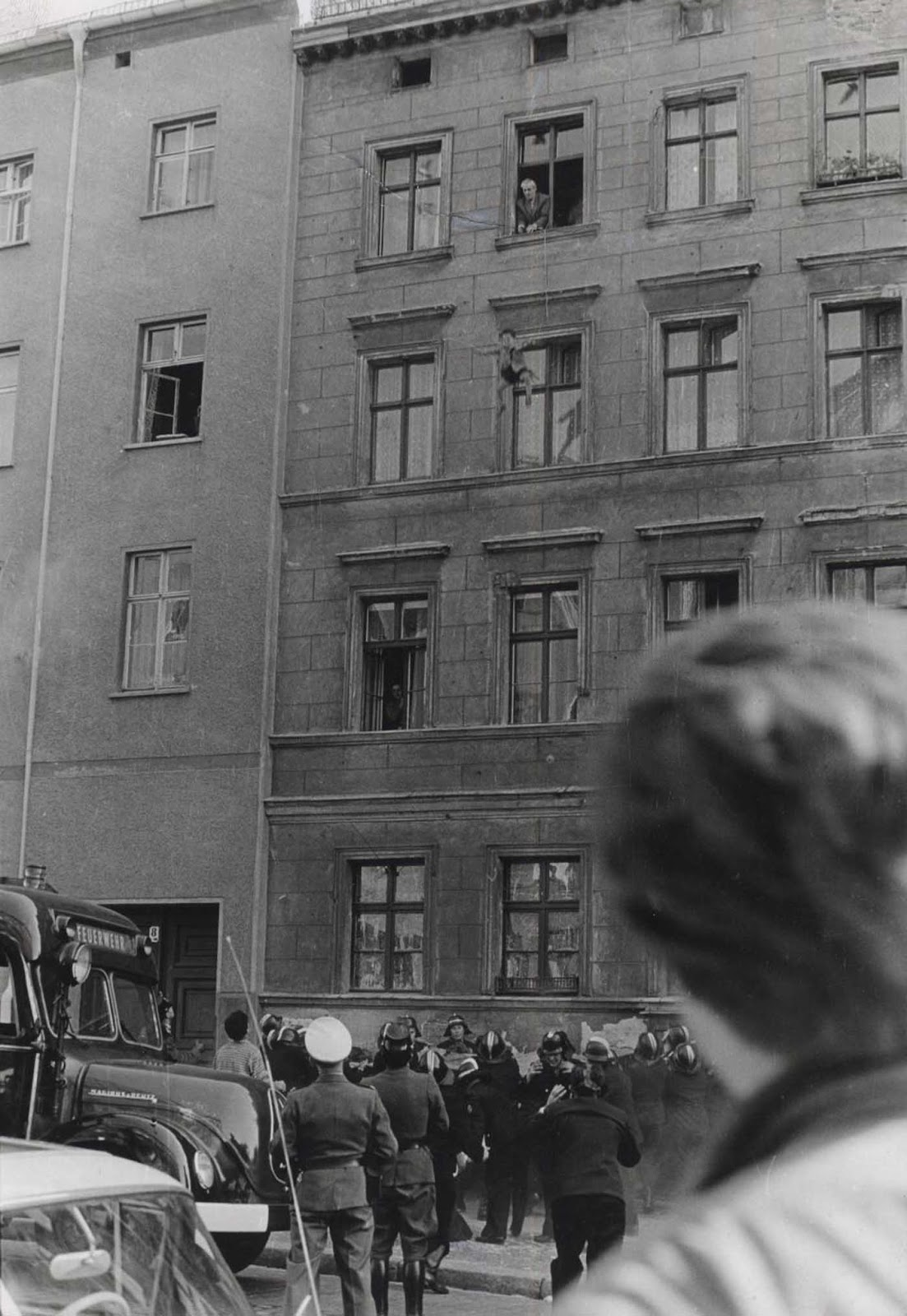 apartment, into a net held by residents and firemen in West Berlin. These apartments were along Bernauer Straße (street) in Berlin. The building actually saddled the border between East and West Berlin. After the wall was first constructed in 1961, many residents escaped through these apartment blocks, in this manner. So many, in fact, that the Soviets finally bricked up the windows and raided the apartments, evicting the people who lived there. After his mother jumped, four year old Michael Finder was tossed by his father to the waiting net below. There was no time to explain all this to his son…no time to reassure him. His daddy simply had to toss in out the window. Then Willy Finder made the jump himself. Theirs was a successful escape, one of many, and this infuriated the Soviet Union, because this was a part of the Soviet occupation zone formed after the reconstruction that followed World War II.
apartment, into a net held by residents and firemen in West Berlin. These apartments were along Bernauer Straße (street) in Berlin. The building actually saddled the border between East and West Berlin. After the wall was first constructed in 1961, many residents escaped through these apartment blocks, in this manner. So many, in fact, that the Soviets finally bricked up the windows and raided the apartments, evicting the people who lived there. After his mother jumped, four year old Michael Finder was tossed by his father to the waiting net below. There was no time to explain all this to his son…no time to reassure him. His daddy simply had to toss in out the window. Then Willy Finder made the jump himself. Theirs was a successful escape, one of many, and this infuriated the Soviet Union, because this was a part of the Soviet occupation zone formed after the reconstruction that followed World War II.
The Soviet occupation zone in Germany, and in Berlin, was suffering from numerous movements of educated individuals from their sectors toward the West throughout the 1950s. This movement, thought to be a brain drain, encouraged the Soviet Union to begin construction of a “Fascist Protection Wall” that was supposed to keep East Germans protected from “Fascism” that the Western Allies had “not eradicated in their sectors.” Of course, the reality was that the wall, later called the Berlin Wall, was designed to keep East Germans from emigrating to the West. The apartments 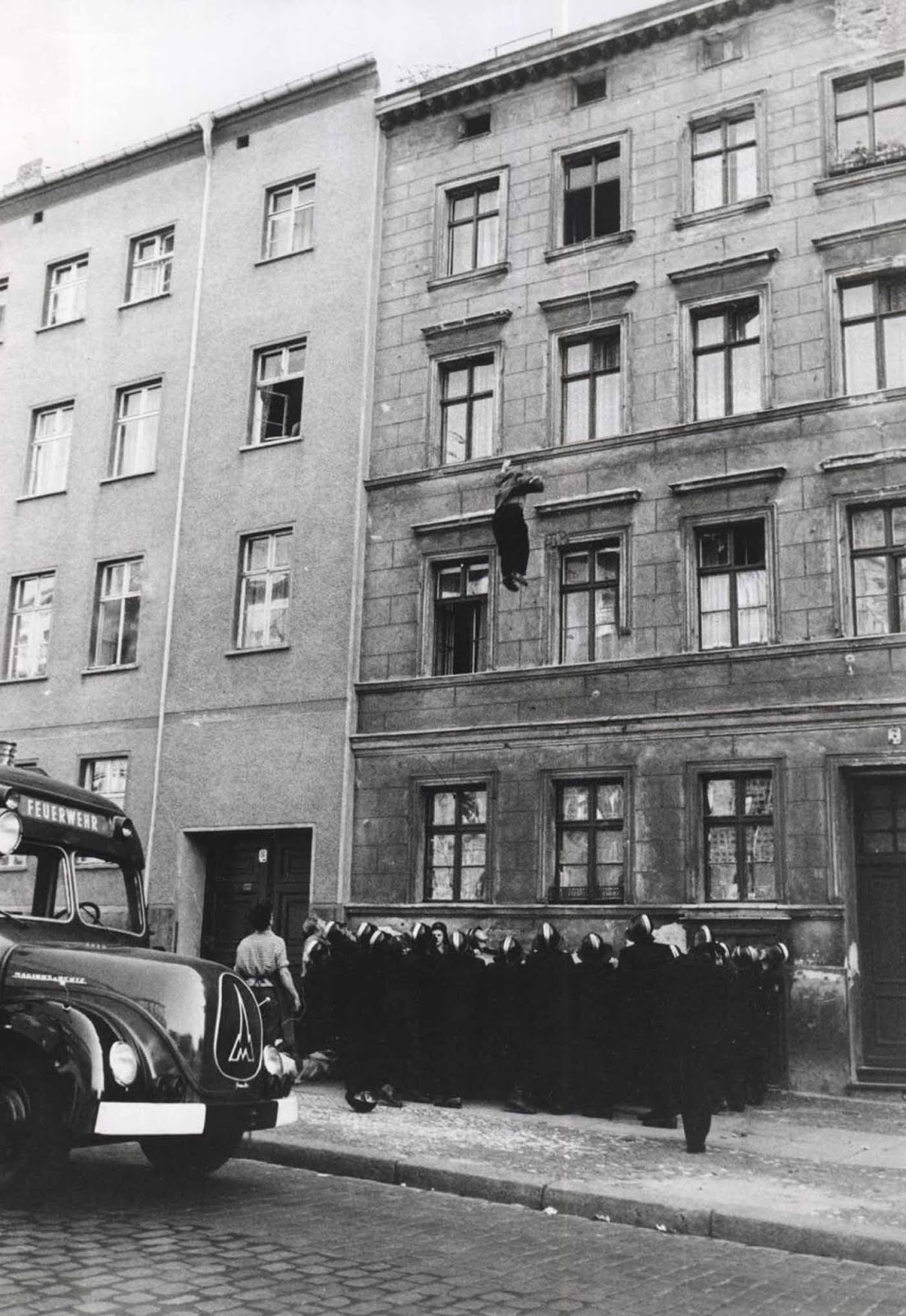 where the Finders lived were later torn down and the Berlin Wall that most of us picture in the news reels, and have chunks of in our museums all over the world, was erected. Nevertheless, between 1945 and 1988, around 4 million East Germans migrated to the West. The majority…as many as 3½ million people left between 1945 and the construction of the Berlin Wall in 1961. Of those, most simply walked across the border. After 1952, they exited through West Berlin. After the border was fortified and the Berlin Wall was constructed, the number of illegal border crossings fell drastically. The numbers fell further as border defenses were improved over the following decades. In 1961, 8,507 people fled across the border, most of them through West Berlin. The construction of the Berlin Wall that year reduced the number of escapees by 75% to around 2,300 per year for the rest of the decade. The Wall changed Berlin from being one of the easiest places to cross the border, from the East, to being one of the most difficult. The wall was finally torn down on June 13, 1990, and the German people were again free to move around the country.
where the Finders lived were later torn down and the Berlin Wall that most of us picture in the news reels, and have chunks of in our museums all over the world, was erected. Nevertheless, between 1945 and 1988, around 4 million East Germans migrated to the West. The majority…as many as 3½ million people left between 1945 and the construction of the Berlin Wall in 1961. Of those, most simply walked across the border. After 1952, they exited through West Berlin. After the border was fortified and the Berlin Wall was constructed, the number of illegal border crossings fell drastically. The numbers fell further as border defenses were improved over the following decades. In 1961, 8,507 people fled across the border, most of them through West Berlin. The construction of the Berlin Wall that year reduced the number of escapees by 75% to around 2,300 per year for the rest of the decade. The Wall changed Berlin from being one of the easiest places to cross the border, from the East, to being one of the most difficult. The wall was finally torn down on June 13, 1990, and the German people were again free to move around the country.
 Heroes come in many forms, but few could be said to have been as sneaky as Eugene Lazowski, who was born Eugeniusz Slawomir Lazowski, in 1913 in Poland. His bravery was combined with genius, and in the end, he saved 8,000 Polish Jews at the height of the Holocaust. Lazowski saw the horrible way the Jews were treated, and he saw a way to help. Eugene Lazowski had just finished medical school when the Nazis invaded Poland in 1939. Typhus was spreading across the country. The disease was killing an average of 750 people a day. In an attempt to contain the disease, the Nazis increased their isolation and execution of Jews. Eugene joined the Polish Red Cross, but he was forbidden by the Nazis from treating Jewish patients. Nevertheless, under the cover of darkness, he sneaked into the Jewish ghetto and took care of the people there. Lazowski’s plan took an incredible amount of intellect, not to mention bravery. His life was on the line too. Lazowski created the illusion of an epidemic of a deadly disease, playing on the deep fears of the Nazis.
Heroes come in many forms, but few could be said to have been as sneaky as Eugene Lazowski, who was born Eugeniusz Slawomir Lazowski, in 1913 in Poland. His bravery was combined with genius, and in the end, he saved 8,000 Polish Jews at the height of the Holocaust. Lazowski saw the horrible way the Jews were treated, and he saw a way to help. Eugene Lazowski had just finished medical school when the Nazis invaded Poland in 1939. Typhus was spreading across the country. The disease was killing an average of 750 people a day. In an attempt to contain the disease, the Nazis increased their isolation and execution of Jews. Eugene joined the Polish Red Cross, but he was forbidden by the Nazis from treating Jewish patients. Nevertheless, under the cover of darkness, he sneaked into the Jewish ghetto and took care of the people there. Lazowski’s plan took an incredible amount of intellect, not to mention bravery. His life was on the line too. Lazowski created the illusion of an epidemic of a deadly disease, playing on the deep fears of the Nazis.
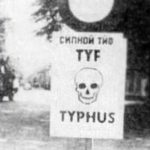 The plan came about in an unusual way. One day, a Polish soldier on leave begged Eugene and his colleague, Dr Stanislaw Matulewicz, to help him avoid returning to the warfront. I think there were many people who fought on the Nazi side of that era, who would give anything not to take part in what the Nazis were all about. Matulewicz had discovered that by injecting a healthy person with a vaccine of dead bacteria, that person would test positive for epidemic typhus without experiencing the symptoms. In an attempt to help the young solider fake a life-threatening illness, the doctors who had discovered that a dead strain of the Proteus OX19 bacteria in typhus would still lead to a positive test for the disease. Eugene realized that this could be used as a defense against the Nazis.
The plan came about in an unusual way. One day, a Polish soldier on leave begged Eugene and his colleague, Dr Stanislaw Matulewicz, to help him avoid returning to the warfront. I think there were many people who fought on the Nazi side of that era, who would give anything not to take part in what the Nazis were all about. Matulewicz had discovered that by injecting a healthy person with a vaccine of dead bacteria, that person would test positive for epidemic typhus without experiencing the symptoms. In an attempt to help the young solider fake a life-threatening illness, the doctors who had discovered that a dead strain of the Proteus OX19 bacteria in typhus would still lead to a positive test for the disease. Eugene realized that this could be used as a defense against the Nazis.
The two doctors hatched a secret plan to save about a dozen villages in the vicinity of Rozwadów and Zbydniów not only from forced labor exploitation, but also Nazi extermination. Lazowski began distributing the phony vaccine widely. Within two months, so many new (fake) cases were confirmed that Eugene successful 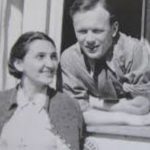 convinced his Nazi supervisors a typhus epidemic had broken out. The Nazis immediately quarantined areas with suspected typhus cases, including those with Jewish inhabitants. In 12 other villages, Eugene created safe havens for Jews through these quarantines. His work would eventually save 8,000 Jewish lives.
convinced his Nazi supervisors a typhus epidemic had broken out. The Nazis immediately quarantined areas with suspected typhus cases, including those with Jewish inhabitants. In 12 other villages, Eugene created safe havens for Jews through these quarantines. His work would eventually save 8,000 Jewish lives.
When the war ended, Eugene continued to practice medicine in Poland until he was forced to flee with his family to the United States. They settled in Chicago, where Eugene earned a medical degree from the University of Illinois. Decades later, he finally returned to Poland, where he received a hero’s welcome for saving those in desperate need of salvation through his unyielding love for humanity.

